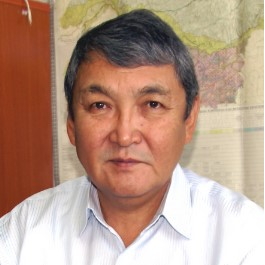Permafrost Landscapes: Classification and Mapping
A special issue of Geosciences (ISSN 2076-3263).
Deadline for manuscript submissions: closed (31 October 2018) | Viewed by 29865
Special Issue Editor
Interests: permafrost landscape; classification; mapping; dynamics; climate change; anthropogenic disturbance; satellite images; thermokarst; yedoma
Special Issues, Collections and Topics in MDPI journals
Special Issue Information
Dear Colleagues,
This Special Issue of Geosciences aims to gather high-quality original research articles and reviews of permafrost landscapes studies.
Classification and mapping of permafrost landscapes is of importance in the knowledge of permafrost. The ongoing negative processes from anthropogenic influence and recent climate changes mainly depend on permafrost landscapes. Distribution of the ground ice content and temperature and the active layer thickness determine the development of permafrost landscapes.
Traditional methods, remote sensing, GIS, and analog and mathematical prediction can be used for theoretical and methodological studies for classification and mapping of permafrost landscapes. In this Special Issue, classification and mapping of not only modern permafrost landscapes, but also landscapes of the past and future is encouraged.
Therefore, I invite you to submit articles on your recent research concerning the above and/or the following topics on permafrost landscapes:
- Theory of classifications
- Methods of mapping
- Fieldwork
- GIS-analysis of the spatial-temporary state
- Assessment of natural or anthropogenic risks and sustainability
- Retro-analysis and forecasting
I also encourage you to send me a short abstract outlining the purpose of the research and the principal results obtained, in order to verify at an early stage if the contribution you intend to submit fits with the objectives of the Special Issue.
Dr. Alexander N. Fedorov
Guest Editor
Manuscript Submission Information
Manuscripts should be submitted online at www.mdpi.com by registering and logging in to this website. Once you are registered, click here to go to the submission form. Manuscripts can be submitted until the deadline. All submissions that pass pre-check are peer-reviewed. Accepted papers will be published continuously in the journal (as soon as accepted) and will be listed together on the special issue website. Research articles, review articles as well as short communications are invited. For planned papers, a title and short abstract (about 100 words) can be sent to the Editorial Office for announcement on this website.
Submitted manuscripts should not have been published previously, nor be under consideration for publication elsewhere (except conference proceedings papers). All manuscripts are thoroughly refereed through a single-blind peer-review process. A guide for authors and other relevant information for submission of manuscripts is available on the Instructions for Authors page. Geosciences is an international peer-reviewed open access monthly journal published by MDPI.
Please visit the Instructions for Authors page before submitting a manuscript. The Article Processing Charge (APC) for publication in this open access journal is 1800 CHF (Swiss Francs). Submitted papers should be well formatted and use good English. Authors may use MDPI's English editing service prior to publication or during author revisions.
Keywords
- Permafrost landscape
- Classification
- Mapping
- Remote sensing
- GIS analysis
- Climate change
- Ground temperature
- Active layer thickness
- Ice content





